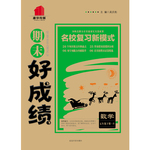题目内容
Australia, the last continent, was discovered by ships belonging to European nations in the seventeenth century. These nations were less interested in changing it into a colony (殖民地) than in exploiting it. As in the early history of the United States, it was the
 English who set up the settlements in Australia. This history and the geography of these two British colonies have some other things in common as well.
English who set up the settlements in Australia. This history and the geography of these two British colonies have some other things in common as well.
Australia and the United States are about the same in size, and their western lands are both not rich in soil. It was the eastern coast of Australia and America that the English first settled, and both colonies soon began to develop towards the west. However, this westward movement took place more because the English were searching for better land than because the population was increasing. Settlements of the western part of both countries developed quickly after gold was discovered in America in 1849 and in Australia two years later.
Although the development of these two countries has a lot in common, there are some striking (显著的) differences as well. The United States gained its independence from England by revolution while Australia won its independence without having to go to war. Australia, unlike the United States, was firstly turned into a colony by English prisoners and its economic development was in wheat growing and sheep raising. By 1922, for example, Australia had fifteen times more sheep than it had people, or almost half as many sheep as there are people today in the United States. Yet, in spite of these and other main difference, Australia and the United States have more in common with each other than either one has with most of the rest of the world.
40. In the early history of America and Australia, both colonies developed towards the west firstly for the reason that _____.
A. the population was increasing rapidly in the east
B. the English thought there might be richer land there
C. gold was discovered there
D. fewer people lived there
41. In the early 1920s, ______.
A. Australia had one fifteenth as many people as sheep
B. there were more sheep in Australia than in the United States
C. the population in Australia was greater than that of the United States
D. the United States had twice as many sheep as people
42. Australia, unlike the United States, ______.
A. did not discover gold until the late 1840s
B. was the last and biggest continent to be discovered
C. was not rich in gold in its western part
D. won its independence by peaceful means
43. In the last paragraph, the underlined sentence means _______.
A. the United States and Australia do not have any main difference
B. the United States and Australia have nothing in common with the rest of the world
C. the United States and Australia have much more in common than they have with other countries
D. in common with the rest of the world, the United States and Australia have a lot of differences
40-43 BADC

 期末好成绩系列答案
期末好成绩系列答案 99加1领先期末特训卷系列答案
99加1领先期末特训卷系列答案 百强名校期末冲刺100分系列答案
百强名校期末冲刺100分系列答案 好成绩1加1期末冲刺100分系列答案
好成绩1加1期末冲刺100分系列答案Come and see the Indian elephants and the new tigers from America. The bears are waiting to meet you, and the monkeys from China are waiting to throw things at you. The lovely dogs from Australia are waiting to laugh at you, and the giraffes from Zambia are waiting to look down on You.
Tickets Grown-ups:$2.00
Children:Over 12 $1.00 Under 12 Free
Opening time:9:00 a.m.— 4:00 p.m. Except Friday 10:00 a.m. — 3 :00 p.m.
Keep the zoo clean!Do not touch,give food or go near the animals.
1.How many kinds of animals are talked about in the passage?
|
A.Four |
B.Five |
C.Six |
D.Seven |
2.Now Mr. Smith is in the zoo with his two sons, one aged 14 and the other 10, how much are the tickets together?
|
A.$4.00 |
B.$2.00 |
C.$3.00 |
D.$1.00 |
3.Which of the following is the visiting time?
|
A.8:30 a.m. Monday |
B.9:30 a.m. Friday |
C.3:00 p.m. Sunday |
D.5:00 p.m. Tuesday |
4.From the passage we can guess the animal “giraffe” must be very _______.
|
A.fat |
B.long |
C.strong |
D.tall |
5.Which of the following can we do in the zoo?
|
A.To give some food to the dogs. |
B.To touch the monkey on the head. |
|
C.To throw things everywhere. |
D.To take a few nice photos. |
On April 10, 1815, Mount Tambora in Indonesia erupted with great force. Fifty cubic kilometers of magma (岩浆) flew from its peak (山顶) and a blanket of ash as thick as one centimeter fell over more than 500,000 square kilometers of Indonesia and the Java Sea. The eruption destroyed Tambora’s peak and formed a hole six by seven kilometers wide. The eruption and resulting tsunamis killed 10,000 people. The agricultural loss and disease brought about by the thick ash caused the deaths of 82,000 more.
Indonesia was rocked again in 1883. On August 26, a small volcano on an uninhabited island between Sumatra and Java, erupted. The eruption produced an ash cloud 80 kilometers high and was heard in Australia—4,800 kilometers away. The eruption also caused a tsunami, which pounded (击打) the shores of Java and Sumatra—killing 36,000 people.
In 1902, St. Pierre was a thriving (兴盛的) community and the largest town on the French colony of Martinique in the Caribbean Sea. Mont Pelee cast a shadow over the town from where it stood, eight kilometers to the north. The townspeople were used to the light continuous sounds of the mountain, but in May, 1902 Pelee started to get really unstable. Clouds of steam and ash poured from the volcano and on May 8, Pelee erupted. Superheated gas and steaming volcanic ash flew out, pouring down the mountain at high speed. Within seconds, the deadly gas cloud had destroyed the town of St. Pierre and incinerated everyone in it — except one prisoner in a basement cell. It was the worst volcano disaster of the 20th century.
1.How many people died because of the eruption on April 10, 1815 ?
|
A.About 10,000. |
B.More than 82,000. |
|
C.About 36,000. |
D.More than 92,000. |
2.The underlined word “incinerated” in the last paragraph can be replaced by “_____”.
|
A.brought up |
B.burned up |
C.woke up |
D.shut up |
3.Only one prisoner survived the volcano eruption of Mont Pelee on May 8 because _____.
|
A.he was on a ship then |
|
B.he was kept underground |
|
C.he stayed in the water |
|
D.he was hidden in a well |
4. We can know from this article that _____.
|
A.no measures can be taken to protect people from a volcano eruption |
|
B.volcanoes usually caused a series of earthquakes |
|
C.sometimes a volcano can completely destroy a city |
|
D.volcanoes are much more violent than the earthquakes |